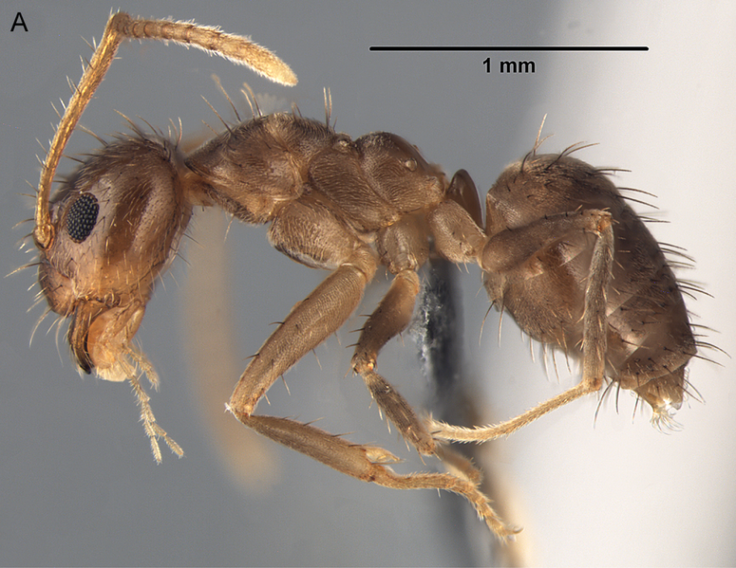'Crazy' Ants, Nylanderia Fulva, Driving Out Fire Ants In America's Southeast, Study Says [PHOTO]

A new, invasive species of “crazy” ants is driving the fire ant out of America’s southeastern states.
"When you talk to folks who live in the invaded areas, they tell you they want their fire ants back,” said Edward LeBrun, a researcher at the University of Texas at Austin, in a statement. "Fire ants are in many ways very polite. They live in your yard. They form mounds and stay there, and they only interact with you if you step on their mound."
Unlike fire ants, Nylanderia fulva, colloquially known as “crazy” ants, will literally "go everywhere.” They are known to invade homes, nest in walls and crawl spaces and cause damage to electrical equipment by swarming into household appliances, Live Science reports.
The frightening data stems from a study published in the April issue of Biological Invasions journal. According to the research, areas infested with the so-called crazy ants contain few, if any, fire ants. Somehow, the crazy ants are managing to supplant fire ants, although researchers have to develop a scientific explanation as to how it’s happening, Live Science reports.
Fire ants aren’t the only species to suffer under the crazy ant’s yoke. According to the study, native ant species have also experienced a sharp population decrease.
According to Live Science, crazy ants were first discovered in Houston in 2002, and have since spread from all the way to Florida. Although the new species lacks the painful sting of the fire ant, it possesses the capacity to reproduce at an even higher rate than its comparatively benign cousin. Furthermore, the crazy ant will not consume the same poisoned bait as fire ants, making population control an issue, LeBrun’s statement noted.
A 2012 study in the PLOS ONE journal noted that Nylanderia fulva originally hails from northern Argentina and Southern Brazil. Aside from its “crazy” moniker, derived from the ant’s unpredictable movement, the species has been called the tawny crazy ant and the Raspberry crazy aunt.
The lone silver lining regarding the crazy ant regards its relatively slow migration pattern. According to LeBrun’s statement, Nylanderia fulva advances just 650 feet per year, considerably slower than the fire ant. Authorities stated that people should take care not to accidentally transport the crazy ant, thereby hastening the spread of its colonies.
© Copyright IBTimes 2024. All rights reserved.






















